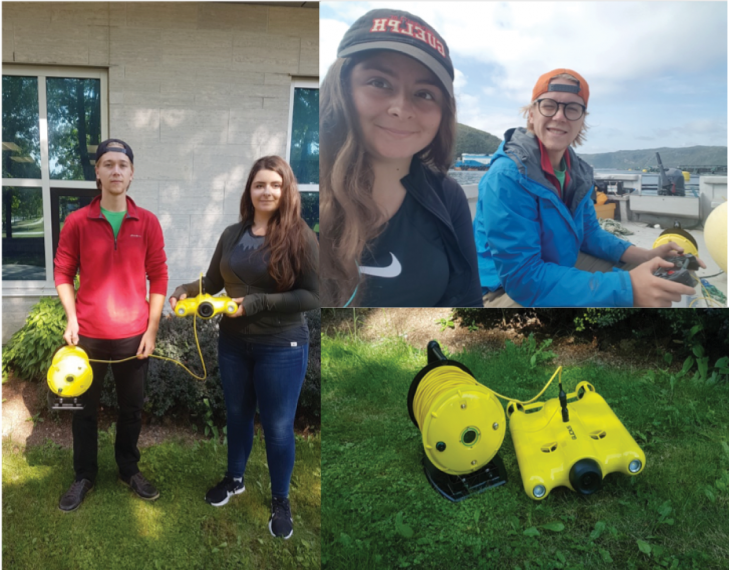Underwater drones give researchers eyes in the sea

How do you study the behaviour of an animal that lives up to 30 metres underwater?
This was the challenge faced by Prof. Elizabeth Boulding and her research team. Boulding was awarded a 2017 Strategic Project grant from NSERC to study the biological control of sea lice in caged Atlantic salmon. Sea lice are small marine parasites that latch onto salmon and, despite their size, can have a major impact on the health of farmed salmon.
Working with her long-term industrial partner Cooke Aquaculture, a major producer of farmed salmon in North America, Boulding is looking at the biological control of sea lice using so-called “cleaner” fish – fish that literally “clean” the salmon by eating the lice attached to the salmon. It’s a classic example of the phenomenon in nature known as mutualism, where two species both benefit from their interaction with each other. In this case, the salmon gets a harmful parasite removed, while the cleaner fish gets a meal.
Cooke Aquaculture is currently exploring the use of two species of cleaner fish, the Lumpfish (Cyclopterus lumpus) and the Cunner (Tautogolabrus adspersus), to reduce or prevent sea lice infestations in the sea cages where salmon are produced. Through their collaboration with Boulding, the company hopes to turn cleaner fish into an economical and sustainable solution to what has become a global aquaculture issue. But first, key questions about cleaner fish behaviour in sea cages must be answered.
Boulding and her collaborators want to know how cleaner fish behave in the sea cage, including where they congregate, how they interact with salmon, and any other aspects of their behaviour that could help aquaculture companies improve their effectiveness as biological control agents. For example, knowledge about where cleaner fish like to congregate could lead to innovative cage designs that optimize interactions between the cleaners and their “clients” – the salmon.
To observe cleaner fish in action, the team initially planned to install stationary cameras in sea cages at a Cooke Aquaculture production site in southern Newfoundland. But such cameras would need to be attached to the cage itself, providing a field of vision around only the edge of the cage. Since field cages are very large, this would mean that interactions between cleaner fish and salmon in many areas of the cage would not be captured. Boulding and her colleagues knew that something more was needed – that’s when Jessica Roy, graduate student and project team member, suggested using an underwater drone.
Recreational drone technology has improved markedly in recent years, in keeping with their growing popularity for a wide range of uses. Among the many underwater options available, the Gladius Advanced Pro was selected for its high level of maneuverability and its adjustable propeller, which can reduce disturbance to the fish being studied.
Just as they had hoped, the Gladius has proven to be a wildly successful research tool, giving Boulding and her team eyes in the sea. Using the drone, they have successfully navigated through the sea cages to depths of 30 metres. Now they can locate where the cleaner fish congregate, and observe their behaviour, giving the team a novel understanding of their spatial preferences.
With the Gladius in hand and the project going strong, the researchers are gaining important insights into lumpfish and cunner behavior within Atlantic salmon sea cages. As their deep-water observations continue, the project promises to yield exciting information that could lead to healthier salmon stock and significant benefits to the Canadian aquaculture industry.